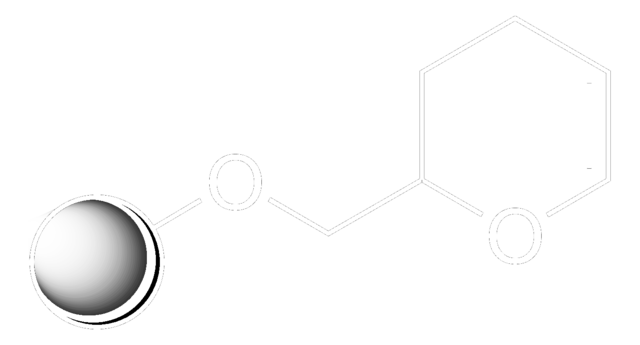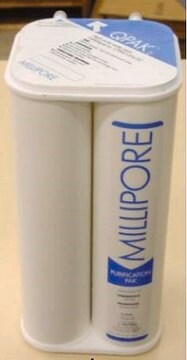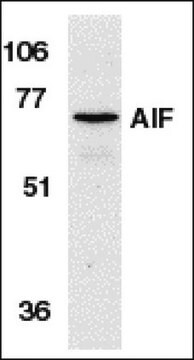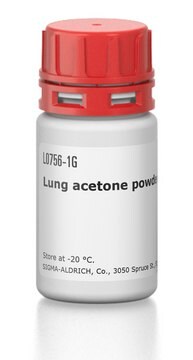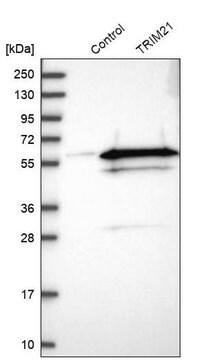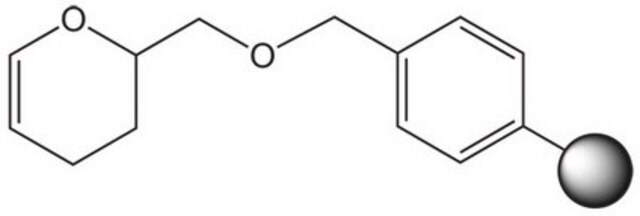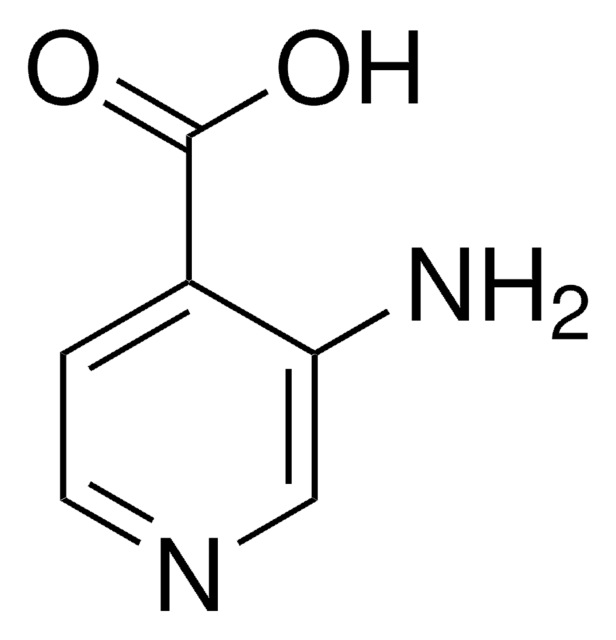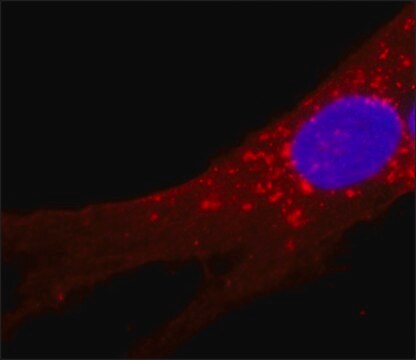AB16501
Anti-AIF Antibody, internal domain
Chemicon®, from rabbit
Synonim(y):
Apoptosis Inducing Factor
About This Item
Polecane produkty
pochodzenie biologiczne
rabbit
Poziom jakości
forma przeciwciała
purified immunoglobulin
rodzaj przeciwciała
primary antibodies
klon
polyclonal
reaktywność gatunkowa
human, mouse, rat
producent / nazwa handlowa
Chemicon®
metody
immunohistochemistry: suitable (paraffin)
western blot: suitable
numer dostępu NCBI
numer dostępu UniProt
Warunki transportu
wet ice
docelowa modyfikacja potranslacyjna
unmodified
informacje o genach
human ... AIFM1(9131)
Opis ogólny
Specyficzność
Immunogen
Zastosowanie
Apoptosis & Cancer
Apoptosis - Additional
K562 cell lysate can be used as a positive control and a 67 kDa band should be detected.
Immunohistochemistry on formalin fixed, paraffin sections: 5-20 μg/ml, with antigen retrieval; see website protocol for details and photographs.
Optimal working dilutions must be determined by end user.
Opis wartości docelowych
Powiązanie
Postać fizyczna
Przechowywanie i stabilność
Komentarz do analizy
Widely expressed
Inne uwagi
Informacje prawne
Oświadczenie o zrzeczeniu się odpowiedzialności
Nie możesz znaleźć właściwego produktu?
Wypróbuj nasz Narzędzie selektora produktów.
Kod klasy składowania
10 - Combustible liquids
Klasa zagrożenia wodnego (WGK)
WGK 2
Temperatura zapłonu (°F)
Not applicable
Temperatura zapłonu (°C)
Not applicable
Certyfikaty analizy (CoA)
Poszukaj Certyfikaty analizy (CoA), wpisując numer partii/serii produktów. Numery serii i partii można znaleźć na etykiecie produktu po słowach „seria” lub „partia”.
Masz już ten produkt?
Dokumenty związane z niedawno zakupionymi produktami zostały zamieszczone w Bibliotece dokumentów.
Nasz zespół naukowców ma doświadczenie we wszystkich obszarach badań, w tym w naukach przyrodniczych, materiałoznawstwie, syntezie chemicznej, chromatografii, analityce i wielu innych dziedzinach.
Skontaktuj się z zespołem ds. pomocy technicznej